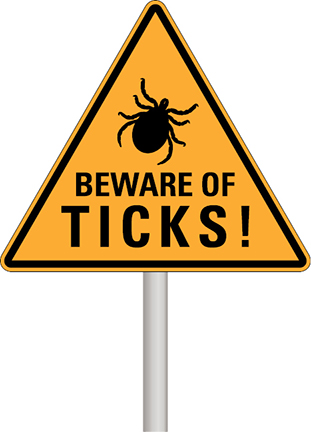Go Outside and Play!
Blue skies, sunshine, what a day to…get the mother of all sunburns?! Yep. That welcome warmth isn’t all good; those ultraviolet rays can begin to damage skin in just 15 minutes. Take some simple precautions to avoid not only the immediate pain of the burn, but also some later-life consequences.
By the way, gray skies and gloom offer no protection from sunburn: ultraviolet rays can penetrate clouds—and singe your skin—all too easily on dismal days, too.
About those later-life consequences: If you just can’t face the summer without a bronze glow, you may be among those who—like 20 percent of our 2017 survey participants—are eventually diagnosed with skin cancer. The rate was highest (35 percent) among participants age 65 or older and lowest (4 percent) among those under age 55. Does that mean younger folks can sizzle themselves with impunity? Nope. Just wait: current “benefits” (that lovely hue!) can exact future costs.
I must go down to the sea again…. If you’re as fond of the water as John Masefield, it’s surely exerting its pull on you now. What to do if that “pull” is a rip current, bearing you out to sea?
• Don’t panic as the shore recedes despite your best efforts to swim toward it.
• Go with the current, swimming parallel to the shore—it’s far less exhausting than struggling against it. Rip currents generally impact small areas, so you soon should swim out of it.
• Once free of the current, swim back to shore.
A few other water safety hints:
• Watch the alcohol intake—among teens and adults, 70 percent of deaths related to water recreation (e.g., swimming, boating) involve alcohol.
• And guys—you be especially careful out there: nearly 80 percent of drownings occur among males.
• Love boating? Wear your life jacket! The US Coast Guard reported that in 2017, 76 percent of boating accident deaths were due to drowning. And 85 percent of those folks were not wearing life jackets.
• Taking that boat way, way out? Consider an EPIRB (Emergency Positioning Indicating Radio Beacon). At sea, adrift in (or out of) your boat, your cell phone is likely lacking a signal, or waterlogged, or both. Your EPIRB will emit a distress signal which will be transmitted to a ground station, alerting rescuers to your predicament and position. The sea is vast and you are tiny.
Lions and tigers and bears—oh, my! What? In Delaware?! Oh, okay. Not so much. But that’s not to say that predatory dangers do not lurk along our hiker/biker trails, amidst the dune grasses—or even in our own backyards.
Chief among them: tiny but potentially lethal ticks. Infected blacklegged and deer ticks can transmit the bacterium Borrelia burgdorferi, which causes Lyme disease. Delaware is among the top 10 states in the US for incidence of Lyme disease. How to avoid those ticks and prevent the disease?
Sun Precautions
Sunscreen: Slather a layer of the stuff on all exposed skin, using a product with a sun protection factor (SPF) of at least 15.
→ Be generous—it takes a shot glass-full to cover your body.
→ Reapply it often—at least every two hours if you’re just basking in the sun; more frequently if you go into the water or sweat or towel it off.
Shade: Take cover, especially during the hours of prime exposure (10 a.m. to 4 p.m.). Spend time under an umbrella, tree, or other shelter.
Cover up: Long-sleeved shirts and long pants offer some extra protection, as do closely-woven and darker-colored fabrics. Dry T-shirts protect better than wet ones. (But even a dry T-shirt has an SPF of less than 15—so it doesn’t offer enough protection on its own.) Some clothing is certified under international standards to offer ultraviolet protection—check labels.
Hats: Ones with wide brims that shade the ears and neck—as well as the face—offer the most protection. A tightly-woven fabric, like canvas, protects better than straw, which has all those holes in the weave. Baseball cap? Doesn’t do anything for the ears or neck.
Sunglasses: These block UVA and UVB rays from reaching the eyes, helping to protect against cataracts as well as guarding the fragile skin around the eyes. Wrap-around styles work best—they even block sunlight trying to sneak in from the side.
Heading into the great outdoors
Avoid areas with tall grasses and leaf litter; try to stick to the center of trails.
Wear long sleeves, long pants, socks, and closed shoes.
Tuck pant legs into socks.
Treat clothing and gear with products containing 0.5 percent permethrin, or purchase permethrin-treated clothing. Permethrin will persist for days on unwashed clothing, so you don’t need to reapply it often.
Use an EPA-registered insect repellant, paying close attention to recommended concentrations for people of differing ages. The repellant will need to be reapplied every few hours.
Back from your outdoor adventure
Check your clothing, gear, and pets for ticks, removing any you find.
If clothing needs to be washed, wash in hot water: warm and cold water will not kill ticks. Tumble clothing (either dry or wet clothing) in a hot dryer.
Shower soon after co ming indoors; this may serve to wash off unattached ticks.
ming indoors; this may serve to wash off unattached ticks.
Conduct a full body check for ticks, using a mirror to view hard-to-see places. Closely examine areas such as underarms, hairlines, and creases—ticks like to hide.
You found one! Now what?!
Grasp the tick with fine-tipped tweezers, as close to your body as you can. Do not crush the tick—leaking body fluids may contain bacteria.
Pull upward with a steady, even pressure—no jerking or twisting.
Mouth parts left behind in your skin? Just leave them— they usually slough off in a day or two.
Do NOT use nail polish, petroleum jelly or hot matches to make the tick “detach.”
Once it’s removed, wash the area—and your hands—with warm soapy water.
Marj Shannon is an epidemiologist and wordsmith who has devoted her life to minutiae. She reports that yes, the devil is in the details. But claims she has seen a few gods there too.
